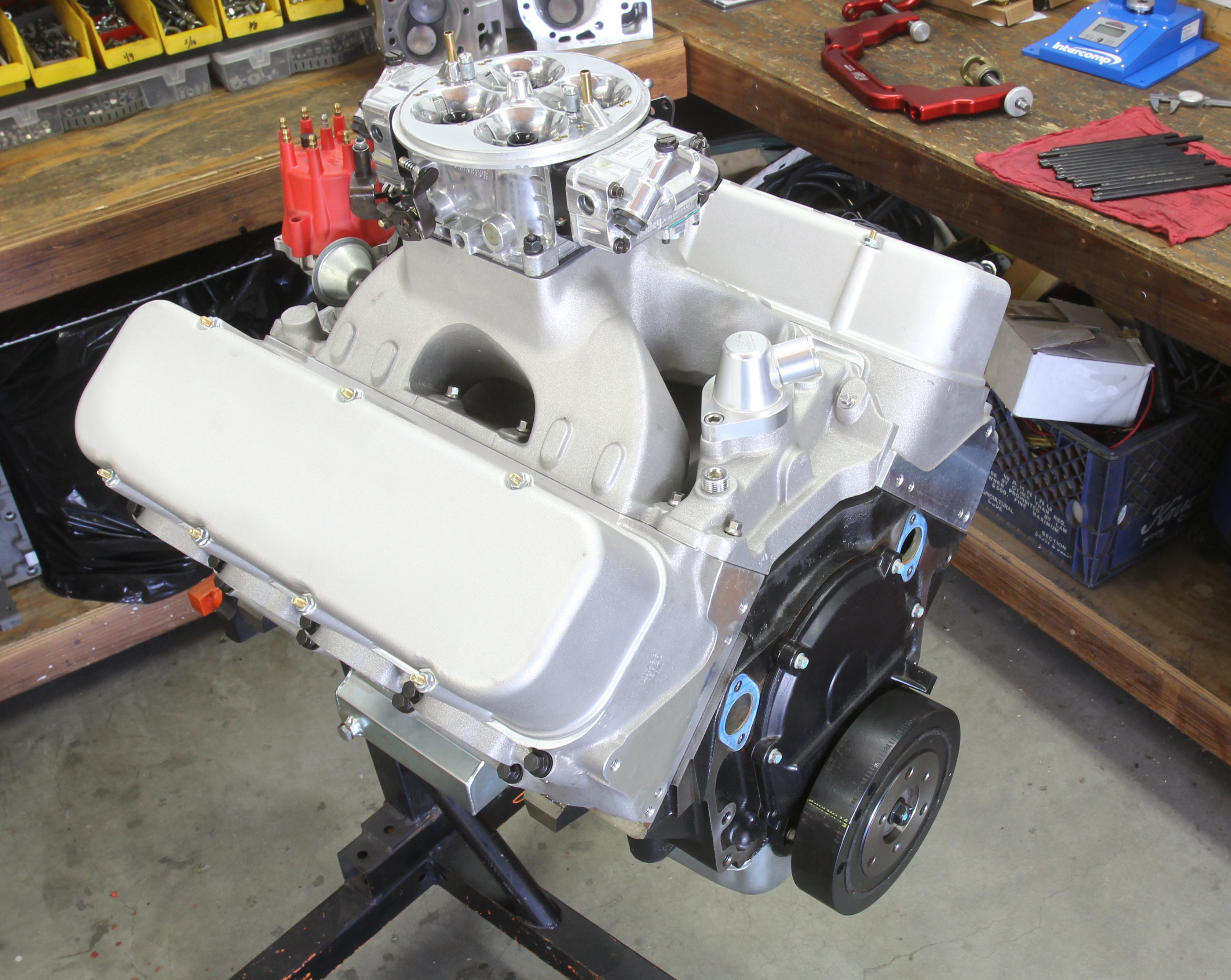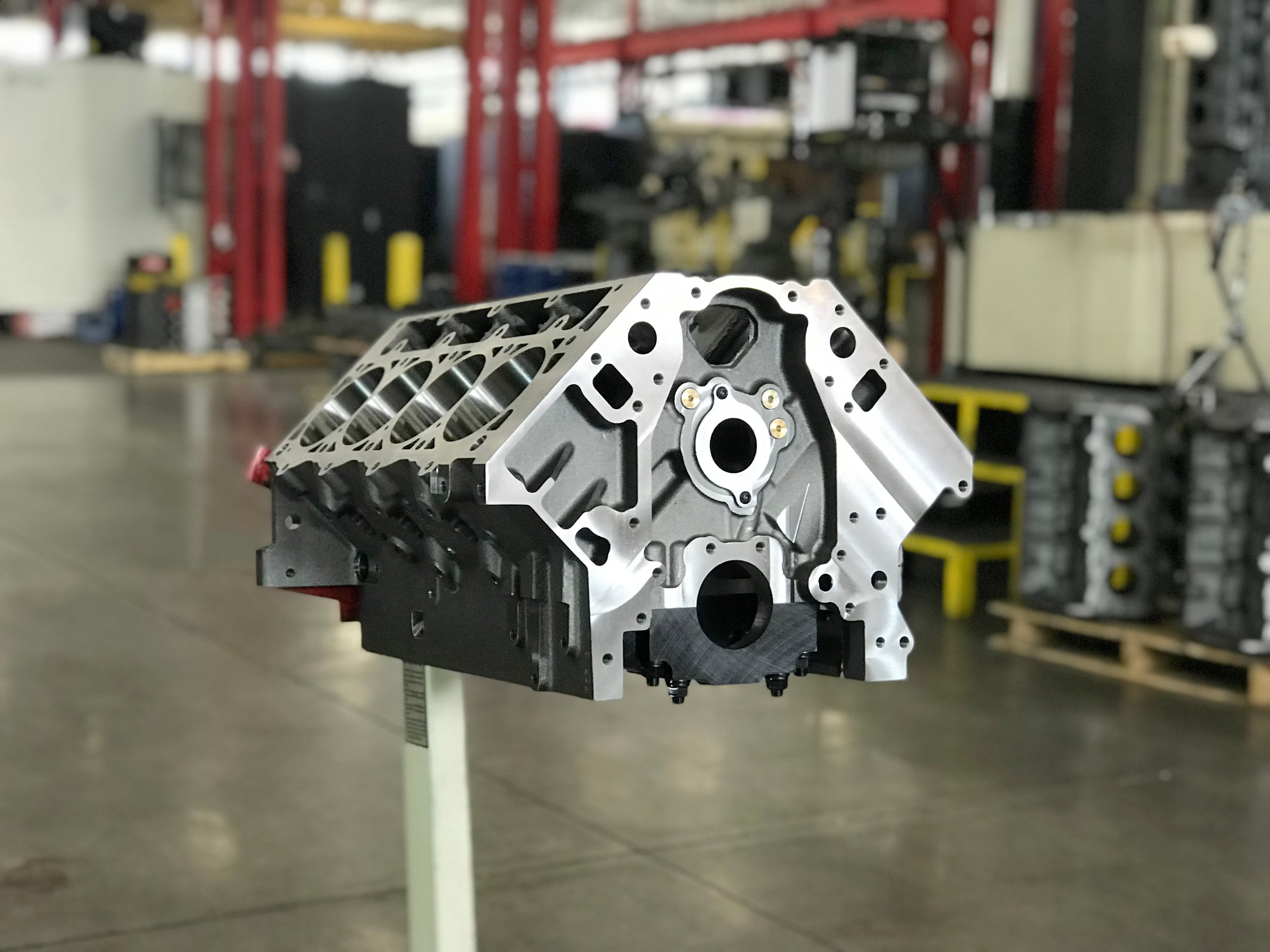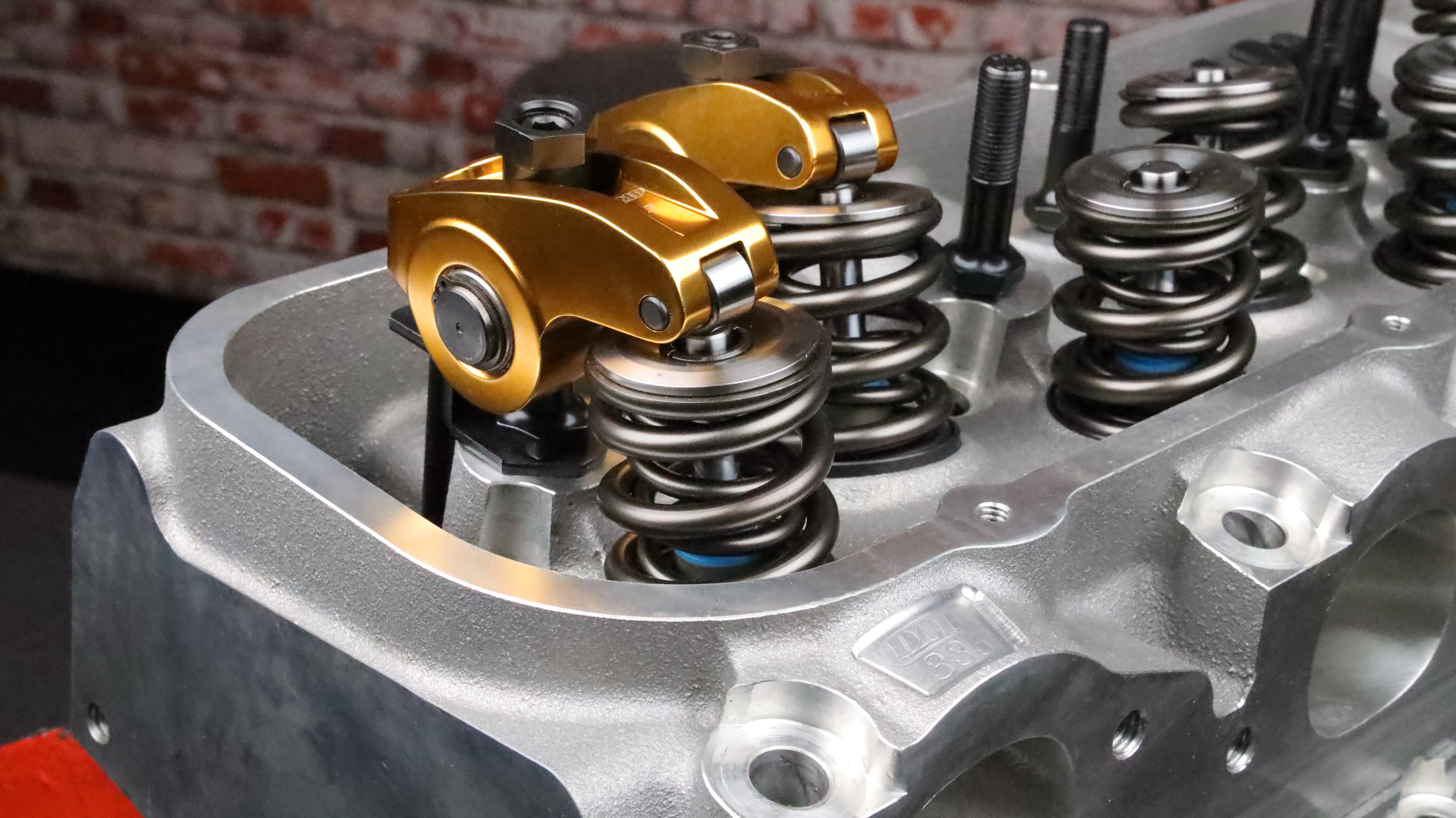With all of the specialized lingo and countless available features, ordering cylinder heads can be a tricky process. Here is some background on cylinder heads to make the process a breeze.
Remember those paper maze games you played as a kid where you maneuvered a crayon path through 87 different passageways to arrive at the final destination? Selecting a cylinder head can seem like that. Even after narrowing down the options, there is a labyrinth of options, styles, and choices to make.
Unlike carburetors or spark plugs, cylinder heads are very engine-specific. This story will outline all of the major cylinder head details, terms, and which ones are critical to your build.
Aluminum vs Iron
When it comes to material selection, your budget will be the deciding factor. Iron heads are typically cheaper due to lower material costs, but aluminum heads are more affordable than ever and readily available. When it comes to performance, aluminum heads pull more heat out of the combustion chamber due to its increased conductive qualities. This allows engines to run more compression without the risk of detonation.
Companies like Dart offer both iron and aluminum castings for many engine families including small- and big-block Chevys, and small-block Ford. There are a few very expensive CNC-machined billet heads on the market but this discussion will focus on cast heads as they are used in 99% of engine builds.
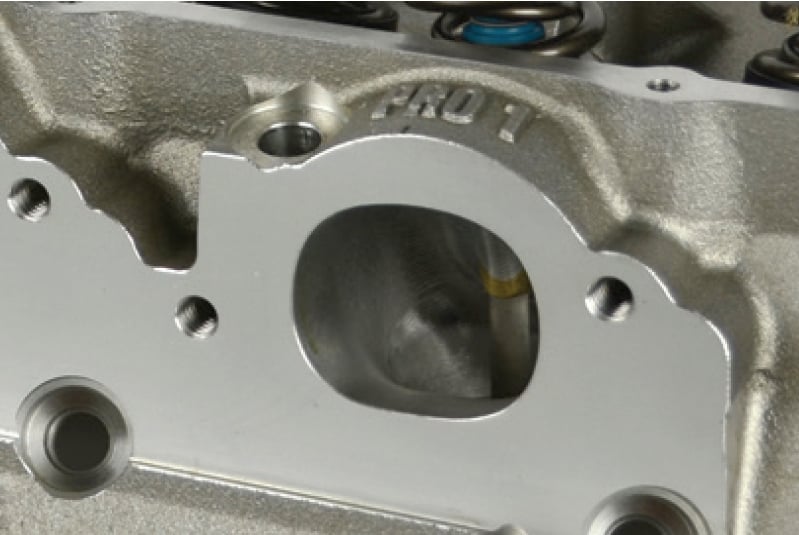
Intake Port configurations
From the factory, many engine applications have different style ports, such as rectangle and oval shapes on a big-block Chevy or rectangle and cathedral ports on an LS. Ordering the correct style is important so that the heads will mate with the intake manifold.
In addition to port shape, port location is also a consideration. For example, many aftermarket heads raise either the intake or exhaust ports to improve flow. There are also many examples of heads where the ports are moved laterally. This is especially common in applications where the two, inner exhaust ports are siamesed. “spread port” heads, as they are often referred to move those two ports apart, which allows more real-estate to make them larger, and also helps them cool better.
Intake Port volume
Many cylinder head descriptions will include a volume spec usually expressed in cubic centimeters (cc). This reflects the port’s overall volume and is not a direct indicator of port flow, IE larger ports do not necessarily mean the head will automatically flow more air and make more power than a smaller port.
For example, a mild big-block street engine like a 454 can often benefit from a smaller, intake port that increases inlet velocity especially when dealing with a carbureted or throttle-body style intake. Employing a cylinder head with a slightly more conservative port volume than the big boys can often result in stronger torque numbers for street engines that will improve throttle response. However, in a dedicated race engine that operates at high RPM, a larger runner can pay huge dividends in power production.
The spread of port volumes can be huge for each engine architecture. For example, Dart offers small-block Chevy heads in intake port volumes in 165cc 180cc, 200cc, 215cc, 227cc, 230cc, and 245cc variants.
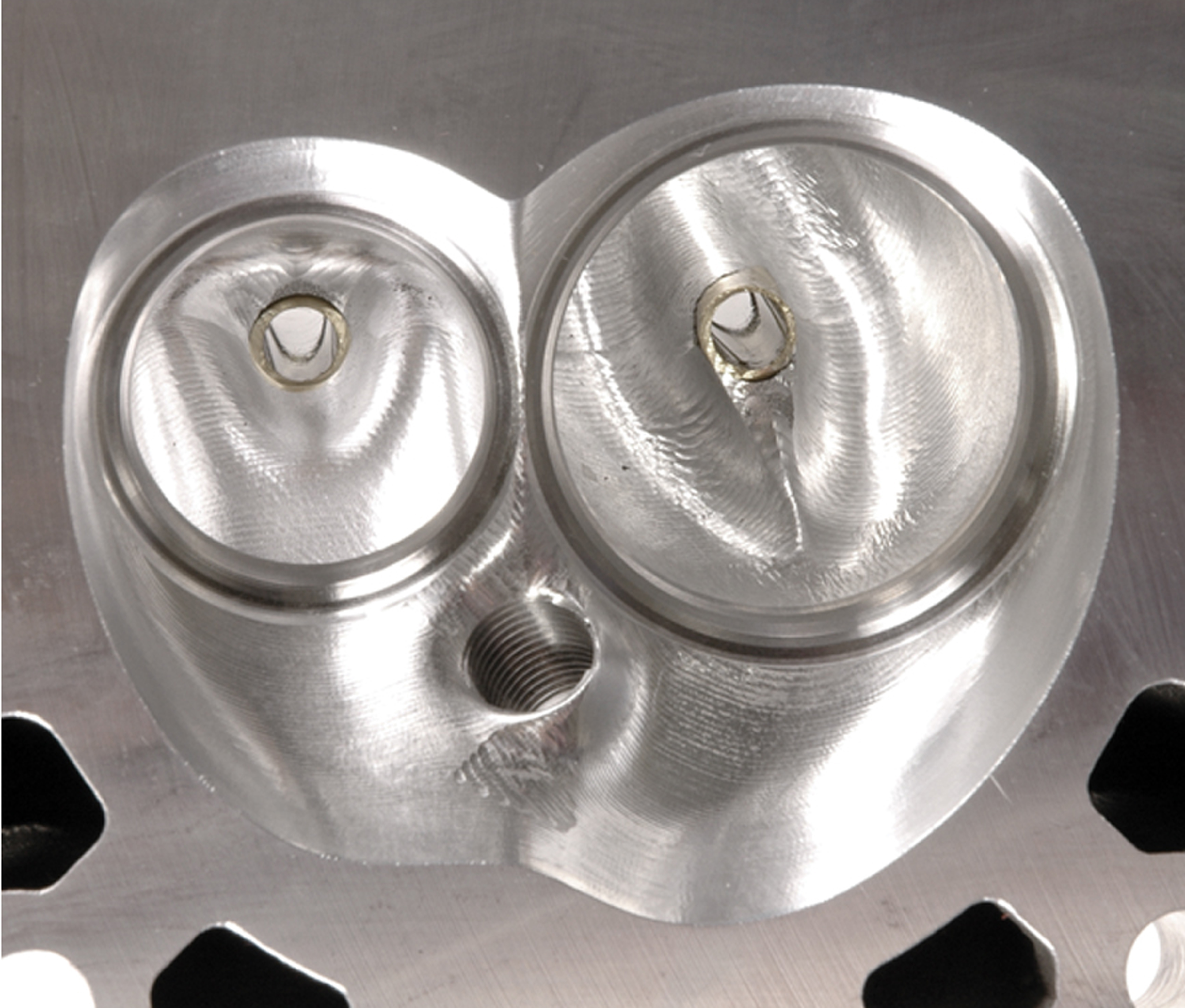
CNC porting massages the intake and exhaust ports to bring out the best in a cast port and is easily identified by the ridged, machined surface left by the cutting tool. This is a Dart 215cc Pro 1 LS cylinder head. The chamber has also been machined.
CNC Porting
You may also see options for CNC porting. This refers to a machining process applied to a standard cast head using a computer numerical control (CNC) machine. Casting a cylinder head involves pouring molten metal into either a sand-cast mold or permanent mold to form the head. This process, while efficient, is not entirely precise. The advantage to CNC porting is that the machine precisely shape the combustion chamber or runner, minimizing casting variances and improving flow.
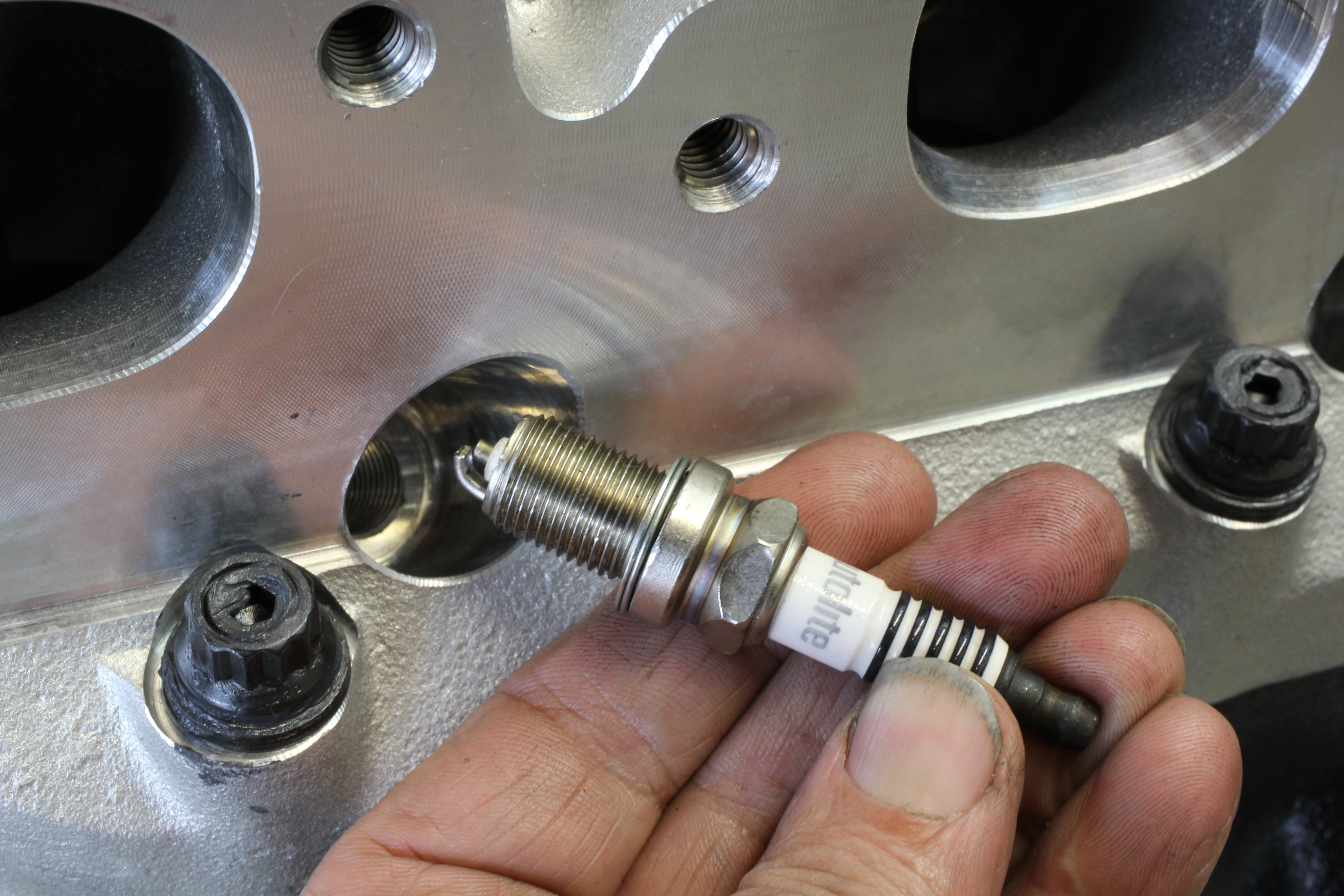
Valve Angle
Valve angle is another term you may run across in describing a cylinder head. This refers to the valve angle relative to the block deck. A small-block Chevy, for example, employs a factory valve angle of 23 degrees but aftermarket heads are not limited to this angle. Dart offers different valve angles with 18-, 16-, 15-, and even 9-degree heads intended for pure competition engines.
Changing the valve angle helps to improve the airflow of the cylinder head. By laying back the valve stem, as the valve opens, more of the port is exposed and more air can pass by into the cylinder. It is important to note a cylinder head with a non-factory valve angle will require pistons with matching valve reliefs and, in many cases, aftermarket valvetrain components such as shaft-mount rockers.
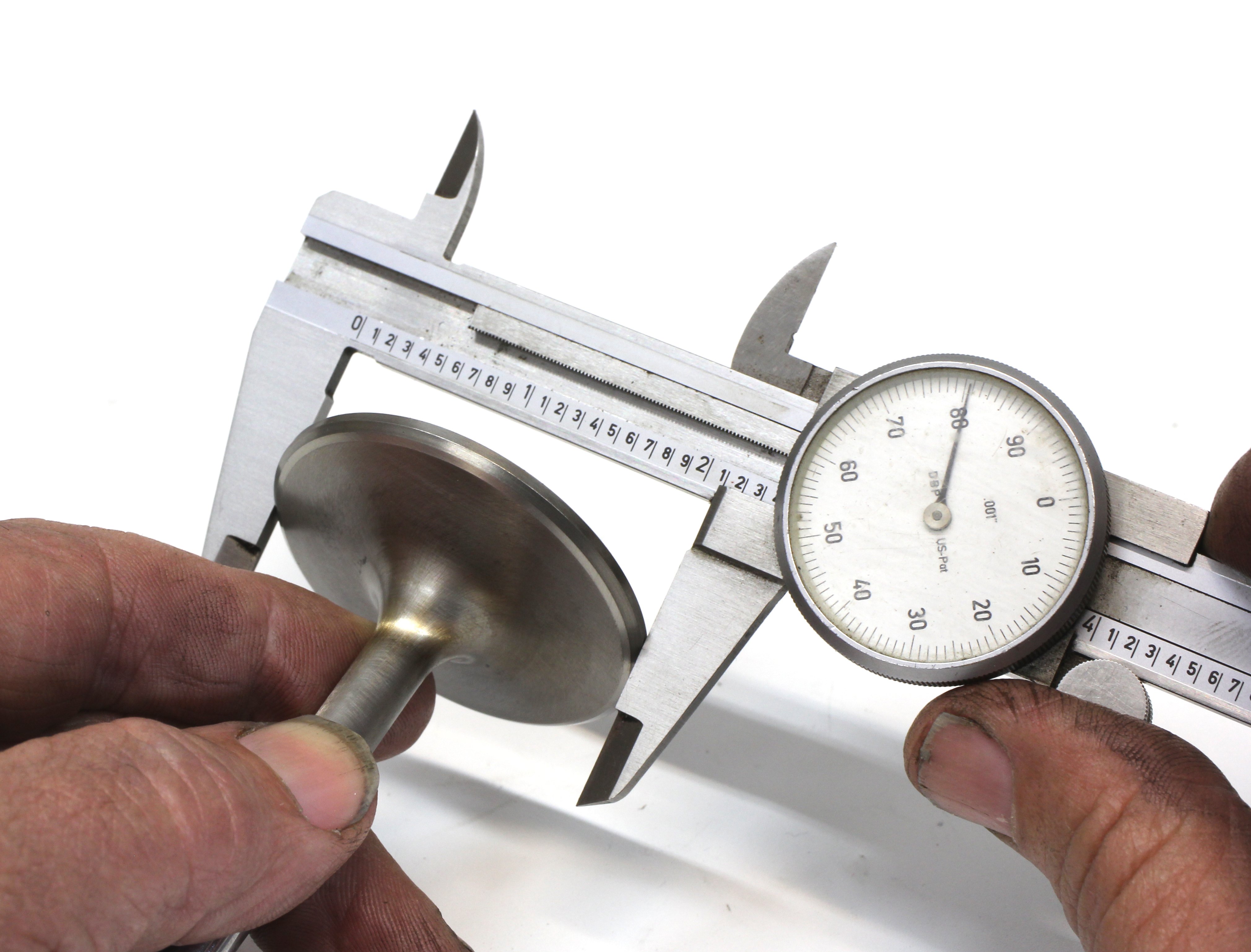
Valve Size
Valve size is another factor. Generally speaking, larger valves offer flow improvements but it’s important to remember that small-bore engines may not be able to accommodate these increasingly large valve diameters. For example, the generous 2.15-inch LS3 intake valves used in rectangle port heads will not clear the stock LS1 3.898-inch bore, so a little knowledge about valve compatibility will prevent costly mistakes.
Along with valve size is a less well-known spec called valve spacing. Most aftermarket heads are built with factory orientation of the valves in the chamber. However, some heads do move the orientation in order to take advantage of larger valves. You may see a reference to a 60/40 shift with some small-block Chevy heads. This refers to moving the exhaust valve toward the cylinder wall with the intake relocated in that same direction in order to accommodate larger valve sizes and/or prevent shrouding of the intake valve by the cylinder wall. This requires a matching relocation of the piston valve reliefs so this is another detail that must be carefully considered especially if these heads are installed on an existing engine.
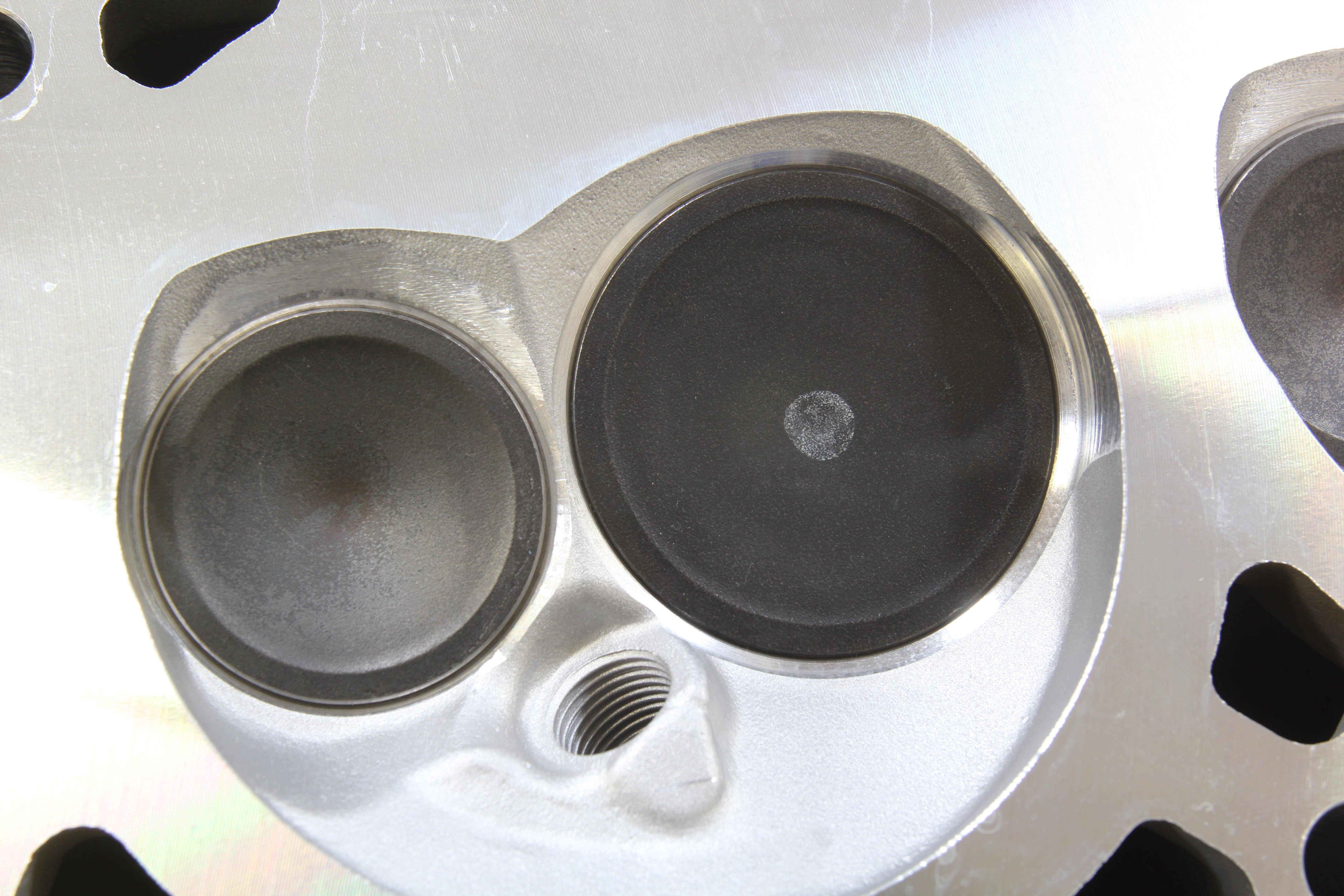
Combustion Chamber Size
Combustion chamber size is also a critical spec since it is the major contributor – along with piston crown configuration – in determining the engine’s compression ratio. For example, the Dart 215cc aluminum head is offered in both 64cc and 72cc chamber sizes. If we apply both chamber sizes to a flat-top 350ci small-block with 6cc valve reliefs, the compression ratio for the 64cc head would be 10.2:1 while the larger 72cc chamber reduces the compression to 9.4:1. This reveals the importance of matching the rest of the engine’s components with the heads you choose.
What is Port Flow
It’s also common for cylinder head companies to include port flow numbers. Machines called flow benches deliver a measurement of CFM (cubic feet per minute) for a given head based at different valve lift. This number is a representative figure of how a given head will perform on an engine by simulating how much air it can flow.
For example, a Dart 24-degree, 308cc rectangle port Iron Eagle big-block head can deliver 325 cfm of air at 0.500-inch valve lift on the intake side. The simplistic evaluation approach tends to judge a cylinder head based solely on the peak valve lift flow numbers. More knowledgeable engine builders, however, will also study the mid-range flow numbers between 0.300- and 0.500-inch valve lifts. For street engines, these numbers can be useful for no other reason than the valve will hit these points twice in the lift curve while the peak occurs only once. It’s also important to pay close attention to the exhaust port flow numbers.
Assembled or Bare?
Most performance street heads are sold fully assembled so it’s important to know if the cylinder head is compatible with the engine’s camshaft. Hydraulic roller cams are quickly becoming the norm in even mild street engines so be careful to choose a head equipped with valve springs that can handle the more aggressive hydraulic roller specs. Hydraulic roller cams create more valve lift than a flat tappet cam and therefore require more aggressive valve springs. Springs can come in single or dual configurations and will be rated to handle a given valve lift. The idea is to purchase a set of heads that are more than capable of accepting the valve lift you plan to run.
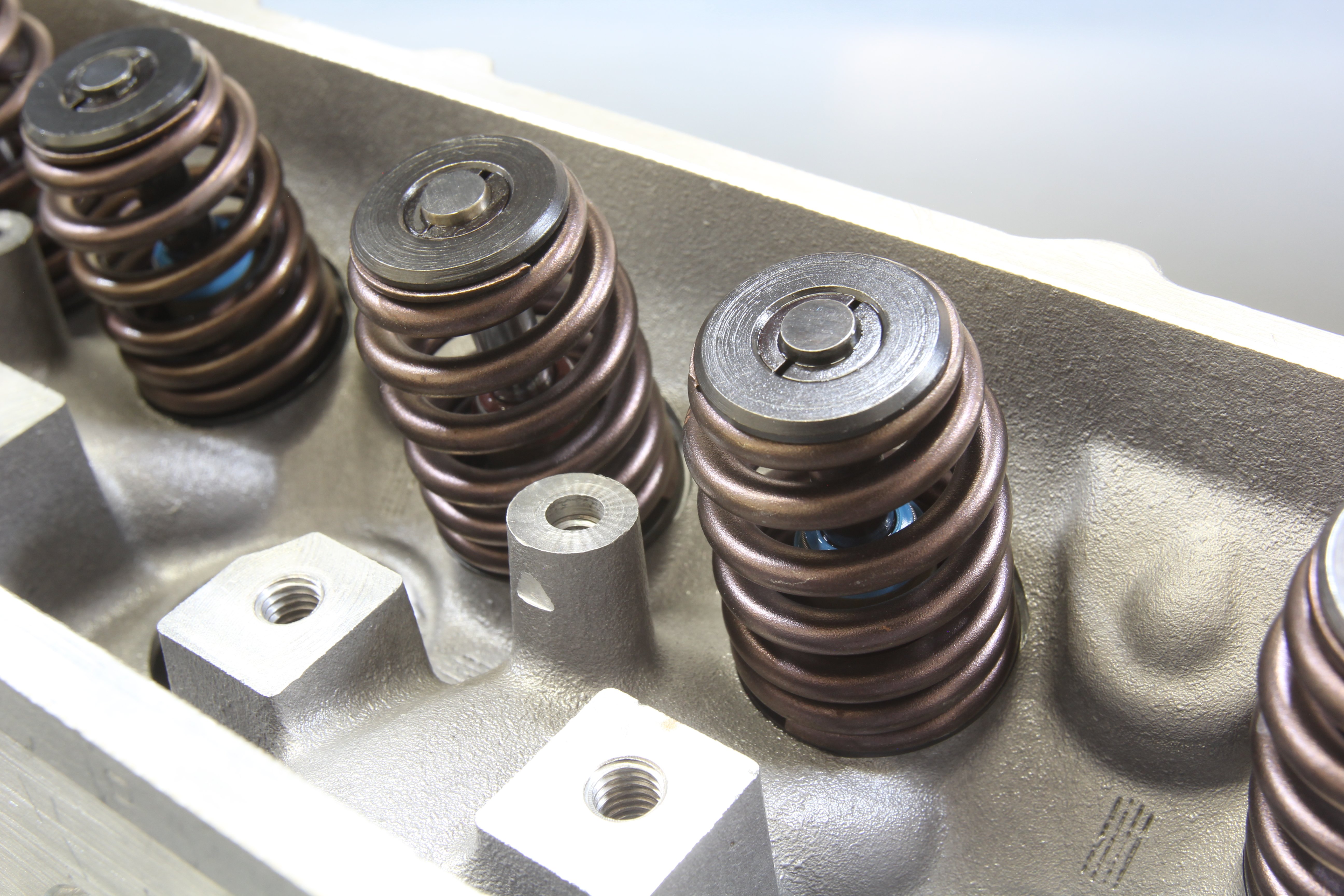
Max Valve Lift
Most cylinder head manufacturers will indicate the head’s maximum valve lift. A Gen III square port 280cc rectangle port Dart LS head can accept up to a 0.650-inch valve lift when equipped with a set of dual valvesprings. Note that this head offers flow potential up to 0.700-inch of valve lift, but the spring package limits the maximum lift at 0.650-inch. The limitations for valve lift often revolve around retainer-to-seal clearance where the bottom of the retainer must leave around 0.050-inch clearance between the bottom of the valve spring retainer and the top of the valve guide seal. The other max valve lift limiter is what is known as coil bind. This is the point where the valve spring is fully compressed. Generally, it’s best to maintain a 0.050-inch clearance to coil bind to avoid valvetrain damage.
Valve Spring Diameter
Another essential cylinder head spec that is often overlooked is the valve spring diameter. With camshafts becoming increasingly aggressive, this makes larger diameter valve springs more attractive than ever. Engines like the big-block Chevy enjoy plenty of real estate for larger springs, but other engines like the small-block Chevy, small-block Ford, and LS engines demand larger springs but the space for these components is somewhat tighter. The original small-block Chevy spring diameter employed a rather conservative 1.25-inch diameter but most performance heads now offer either 1.437-inch diameter or even 1.550-inch springs as options for aggressive solid roller cammed engines.
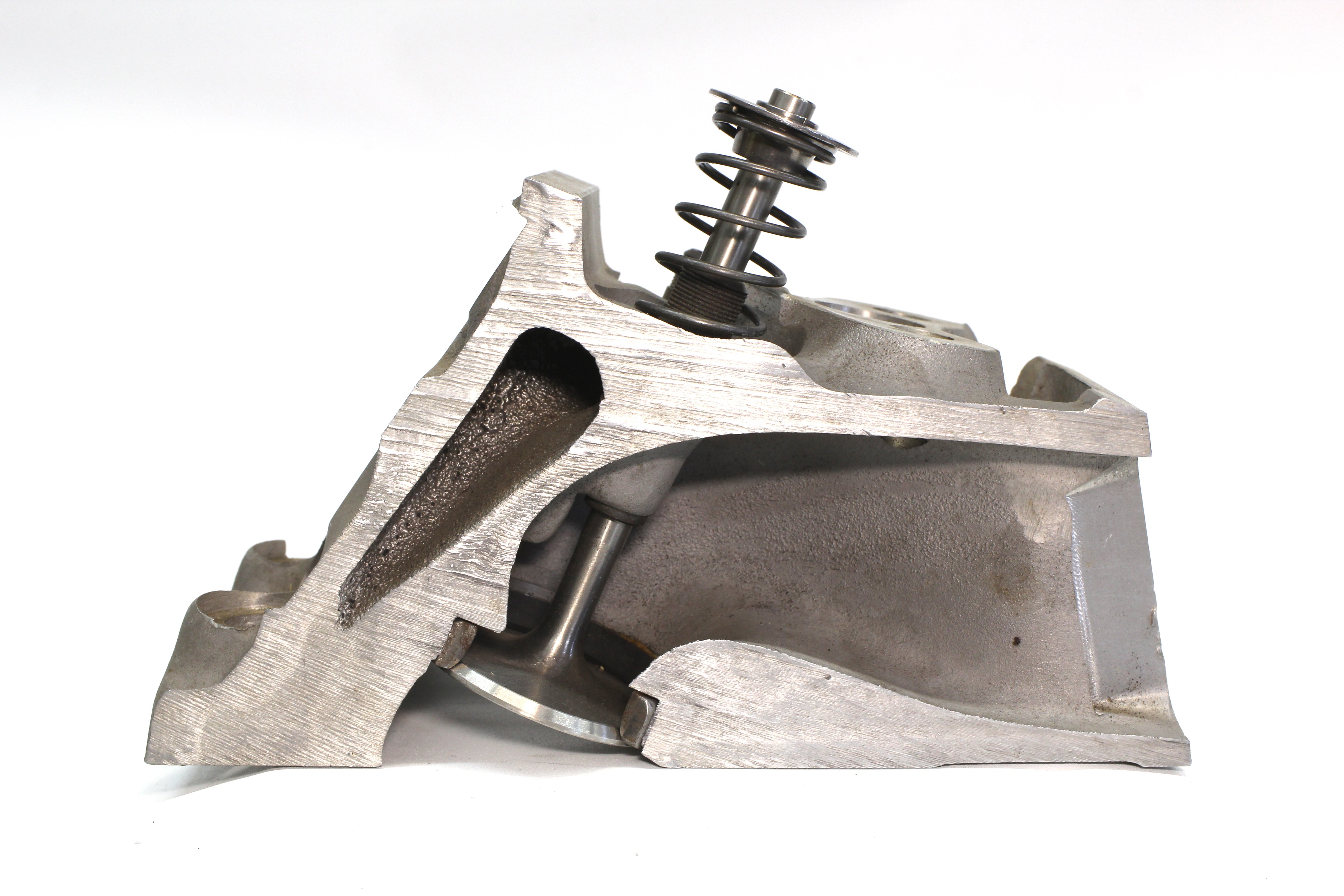
Valve Length
Valve length is another potential option. Generally, heads with larger ports and greater power potential often include valves that are 0.100-inch longer than stock. These longer valves are used to accommodate taller valve springs that allow greater lift that match up with the port’s ability to flow air at increasingly higher valve lifts. These longer valves will also demand a longer pushrod to ensure proper valvetrain operation.
While much of the focus on cylinder heads revolves around the intake side, it’s also important to be aware of changes to the exhaust port side of the head. Many aftermarket cylinder heads feature raised exhaust ports where the vertical position of the exhaust ports have been moved upward to improve port flow, especially at higher valve lifts.
Choosing a cylinder head is one of the most important decisions you will make when it comes to building a performance engine. A properly-sized cylinder head for even a mild performance engine can make a huge improvement in both power and drivability so make sure that all those small details are handled before you make the decision. Your engine will be glad you did.


